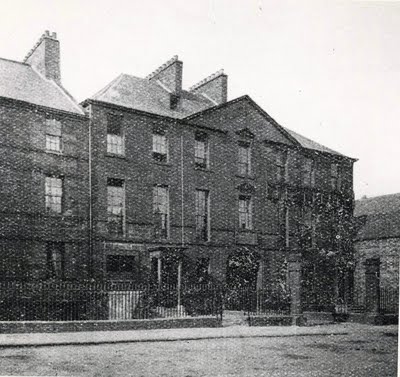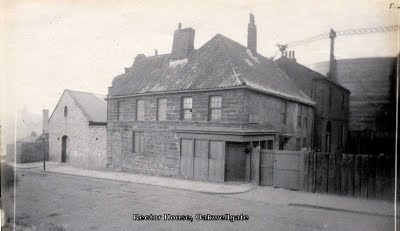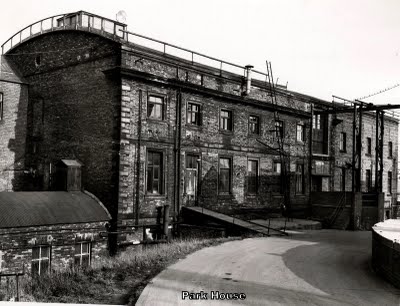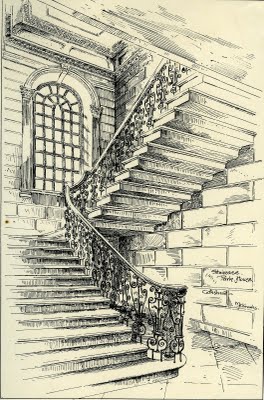Oakwellgate
Welcome to the Oakwellgate page which brings you text from Vestiges of Old Newcastle and Gateshead by J.R. Boyle FSA
Low Felly Gaieshead'On-Tyne, June 1890.
The illustrations in the book are not available to me so I have sprinkled the text with pictures that were available
Low Felly Gaieshead'On-Tyne, June 1890.
The illustrations in the book are not available to me so I have sprinkled the text with pictures that were available
Left click the images to enlarge
says Mr. Longstaflfe, *' indicate the site of an old manor house of the bishops, as it adjoined the episcopal demesnes." In the seventeenth century it was the residence of one of the Gateshead families of Cole. William Hilton, the poet, describes it, in 1795, as **now in ruins." The present structure, to which the name of ** King John's Palace" is popularly attached, ** presents no features
of antiquity."
The most interesting old house in the street is the one on the east side, and opposite the entrance to the churchyard. It was formerly the rectory house. It is a building of the early part of last century, and was occupied by the rectors of Gateshead till about fifty-five years ago.
[This building is described as late as 1834 as being 'a commodius house, with gardens, and commands a fine view towards the river' (Mackenzie and Ross, 1834, p89), the rectory was soon surrounded by industrial development (note the gasometer pictured behind the house)
and was abandoned for a new buiding in Bensham in 1839 (Manders 1973, p138). Part of the building was subsequently used as a public house called the Brandling Arms, and later as the first Co-op store in 1861-3. By the 1880s it was a muniment store for the North East Railway, and then as gas and water offices for the company. It was mostly demolished in 1914. This is one of the only surviving images of the building in existence. The Sage Gateshead and grounds now stands on the site.
The position of the building can be seen on the 1858 County Series Ordnance Survey Map of Gateshead in the Rectors Fields. It is marked as both the 'Brandling Arms P.H.' and the 'Old Rectory' by this date. Left click for close up of 1914 Ordnance Survey Map

Digitized by Google
248
On the same side of the street are one or two large houses of the
eighteenth century which still bear traces of having been built for wealthy occupants.
Park House.
Gateshead Park is mentioned at an early period. It is no doubt ** the fourth part of the arable land'' of Gateshead, which, **with the new en- closures which the lord bishop caused to be made, and the meadows,*' in the time of Boldon Buke, remained ** in the hand of the lord bishop, with a stock of two ploughs." In 1312 bishop Kellaw granted to John Gategang, "thirty and three acres of land, with appurtenances, in Gateshead, of which twenty and six acres lie in a certain place which is called Aldepark, and the remaining seven acres adjacent to the said place." In the time of Hatfield's Survey, John de Sadberg held the manor of Gateshead, " with the borough, the lands of the demesne, the meadows and pastures." Of these lands 94 acres are said to be ** in the field of Gatesheved " and 55 acres on the Tyne. Sadberg paid "for all the profits of the said borough and its court" £22 per annum. We
find, however, at an early period of Hatfield's episcopacy, an appointment of a keeper of the bishop's park at Gateshead. The office was held for life, at a salary of three-halfpence per day. Similar appointments follow, till in 1448 bishop Neville appoints Robert Preston to be keeper both of the park and the
tower of Gateshead. The offices continued to be jointly held, but the last appointment I have seen occurs in 1508.
Park House, Gateshead. Southern elevation
Left click the image to enlarge
Rebuilt by Wiliam Cotesworth and again by Henry Ellison in c1730, this was used for many years as the drawing office for Clarke Chapmans at their Victoria Works. It burnt down c1992. Traditionally it was the home of the Lord of the Manor of Gateshead. In the nineteenth century it was rented by a number of industrialists including Christian Allhusen.
Reproduced by permission of English Heritage NMR (National Monuments Record)
Left click the image to enlarge
Rebuilt by Wiliam Cotesworth and again by Henry Ellison in c1730, this was used for many years as the drawing office for Clarke Chapmans at their Victoria Works. It burnt down c1992. Traditionally it was the home of the Lord of the Manor of Gateshead. In the nineteenth century it was rented by a number of industrialists including Christian Allhusen.
Reproduced by permission of English Heritage NMR (National Monuments Record)
In 1716 bishop Crewe leased the estate of Gateshead Park and the manor of Gateshead to William Coatsworth for a term of twenty-one years. The manor has since been held under a succession of similar leases. The old buildings at the west end of the later hall are
part of a mansion built by Coatsworth about 1723. The estate soon passed into the hands of the Ellisons, one of whom, Henry Ellison, of Hebbum, in 1729, married one of the daughters and co-heirs of William Coatsworth. The more modern house was built, in 1730, by Henry Ellison. It is a plain and spacious
Digitized by Google
249
mansion, and when surrounded by green glades, and avenues of ancient elms and oaks, as it was at no distant date, it must have been an extremely pleasant abode.
It has a fine staircase, with wrought iron balustres of elegant design. The house is mentioned in Charlotte Bronte's novel, " Jane Eyre," as the residence of the heroine's aunt. In recent years it has been abandoned to the purposes of commerce, and is now almost surrounded by manufactories. The lodge whereat the principal avenue was entered still stands on the Sunderland Road, a desolate memorial of departed men and times ; pallisades, gates, and trees are gone, but the faithful ivy yet clings about the old cottage, as if striving to maintain the aspect of better days.



